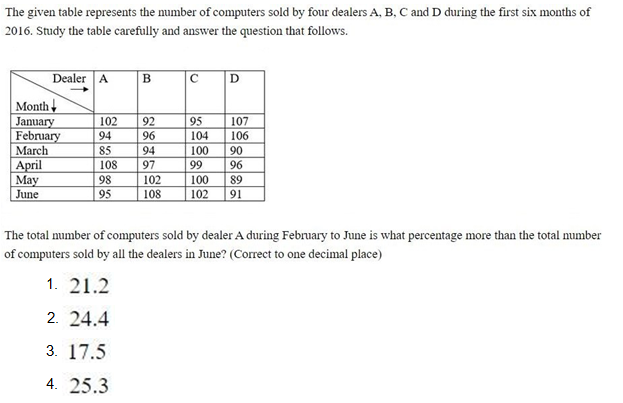Question
Which of the following query will return the
third-highest salary from an Employee table in SQL?Solution
To get the third-highest salary, the query SELECT salary FROM Employee ORDER BY salary DESC LIMIT 1 OFFSET 2; fetches the salary value after skipping the top two highest salaries. The outer query ensures that we only get the third-highest salary. Why Other Options are Wrong: a) Incorrect usage of LIMIT; it should be OFFSET 2 instead of LIMIT 2, 1. b) This would return multiple rows or result in an error. c) DISTINCT is unnecessary and could result in wrong data if multiple employees have the same salary. e) This query would return the first three salaries in ascending order, not the third-highest.
The number of students passed in college A is what percent (approximately) the number of student passed in college C? (During all the given year)
Find the ratio between the number of children visiting Buxa Tiger Reserve and Betla National Park together.
What is the average number of women visiting all the Parks together?
The total number of children visiting Kanha National Park is approximately what percent of number of children visiting Indravati National Park?
What was the ratio of the total number of students passed and failed in college C (during all the given years?

If the number of cars produced by Company P increased by 20% in 2023 compared to 2022, how many cars would be produced by Company P in 2023?
In 2021, what is the difference between the number of cars exported by Company P and Company R ?
What is the difference between the total number of orders who were not delivered by Jabong and Myntra together and that of who were not delivered by Fl...
What is the approximate average number of students failed in college C in during all the given year?


